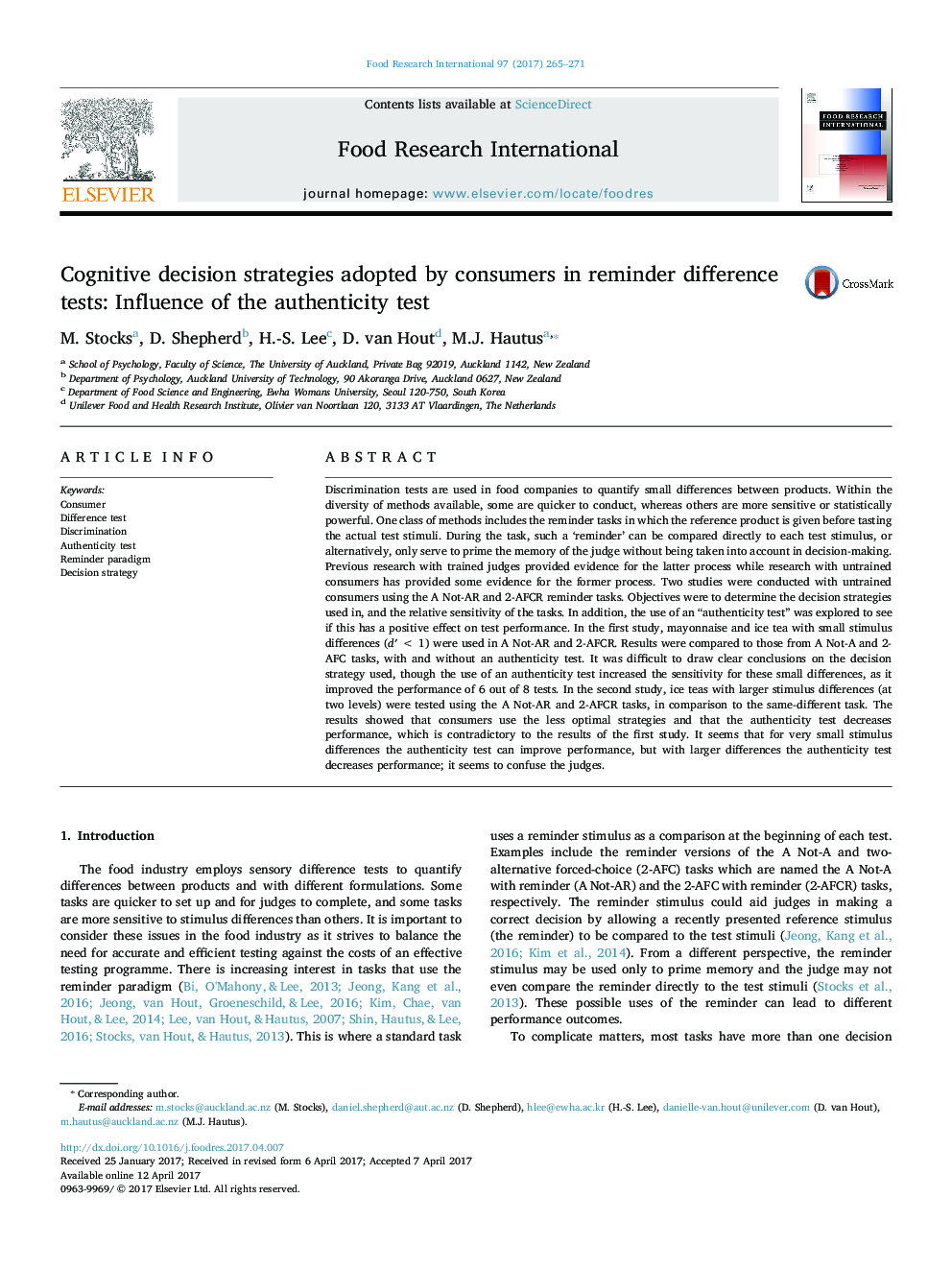| کد مقاله | کد نشریه | سال انتشار | مقاله انگلیسی | نسخه تمام متن |
|---|---|---|---|---|
| 5768232 | 1628453 | 2017 | 7 صفحه PDF | دانلود رایگان |
- The decision strategy in difference tests can confound estimates of sensitivity.
- Consumers were tested using reminder and non-reminder difference tests.
- Consumers used non-optimal strategies in reminder tests; unlike trained judges.
- Thus consumer difference-test data analysis is different to that for trained judges.
Discrimination tests are used in food companies to quantify small differences between products. Within the diversity of methods available, some are quicker to conduct, whereas others are more sensitive or statistically powerful. One class of methods includes the reminder tasks in which the reference product is given before tasting the actual test stimuli. During the task, such a 'reminder' can be compared directly to each test stimulus, or alternatively, only serve to prime the memory of the judge without being taken into account in decision-making. Previous research with trained judges provided evidence for the latter process while research with untrained consumers has provided some evidence for the former process. Two studies were conducted with untrained consumers using the A Not-AR and 2-AFCR reminder tasks. Objectives were to determine the decision strategies used in, and the relative sensitivity of the tasks. In addition, the use of an “authenticity test” was explored to see if this has a positive effect on test performance. In the first study, mayonnaise and ice tea with small stimulus differences (dâ²Â < 1) were used in A Not-AR and 2-AFCR. Results were compared to those from A Not-A and 2-AFC tasks, with and without an authenticity test. It was difficult to draw clear conclusions on the decision strategy used, though the use of an authenticity test increased the sensitivity for these small differences, as it improved the performance of 6 out of 8 tests. In the second study, ice teas with larger stimulus differences (at two levels) were tested using the A Not-AR and 2-AFCR tasks, in comparison to the same-different task. The results showed that consumers use the less optimal strategies and that the authenticity test decreases performance, which is contradictory to the results of the first study. It seems that for very small stimulus differences the authenticity test can improve performance, but with larger differences the authenticity test decreases performance; it seems to confuse the judges.
242
Journal: Food Research International - Volume 97, July 2017, Pages 265-271
